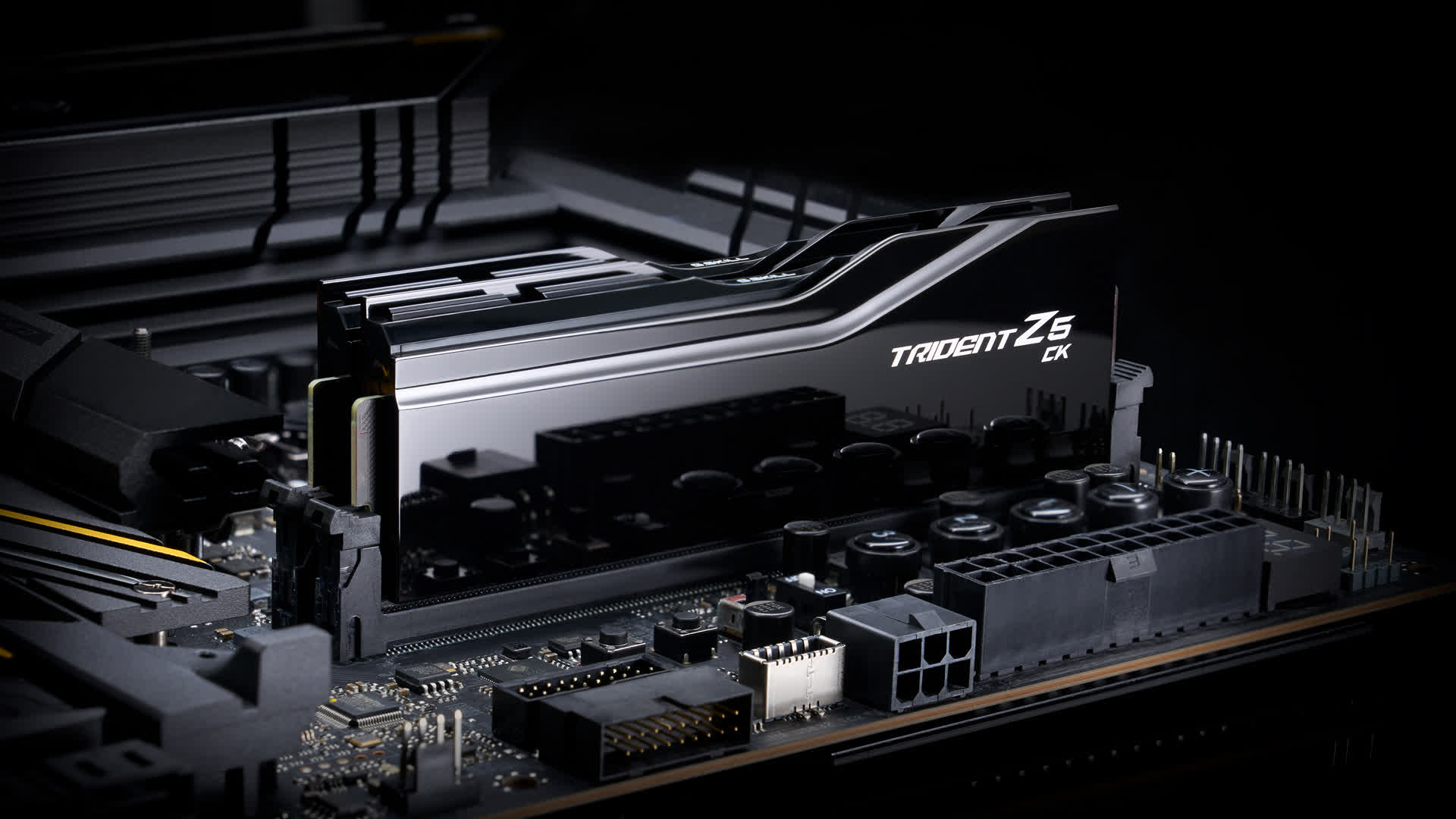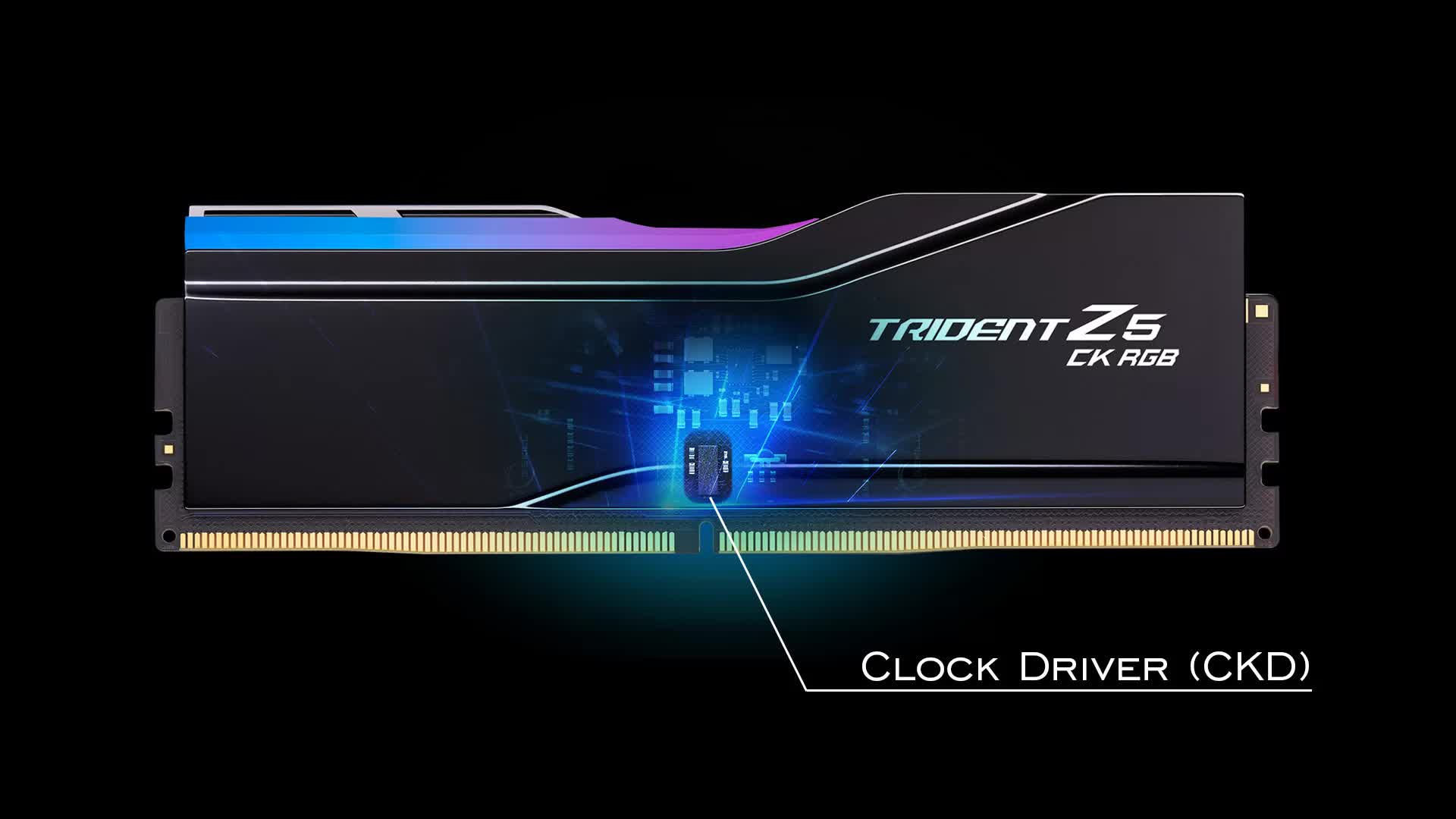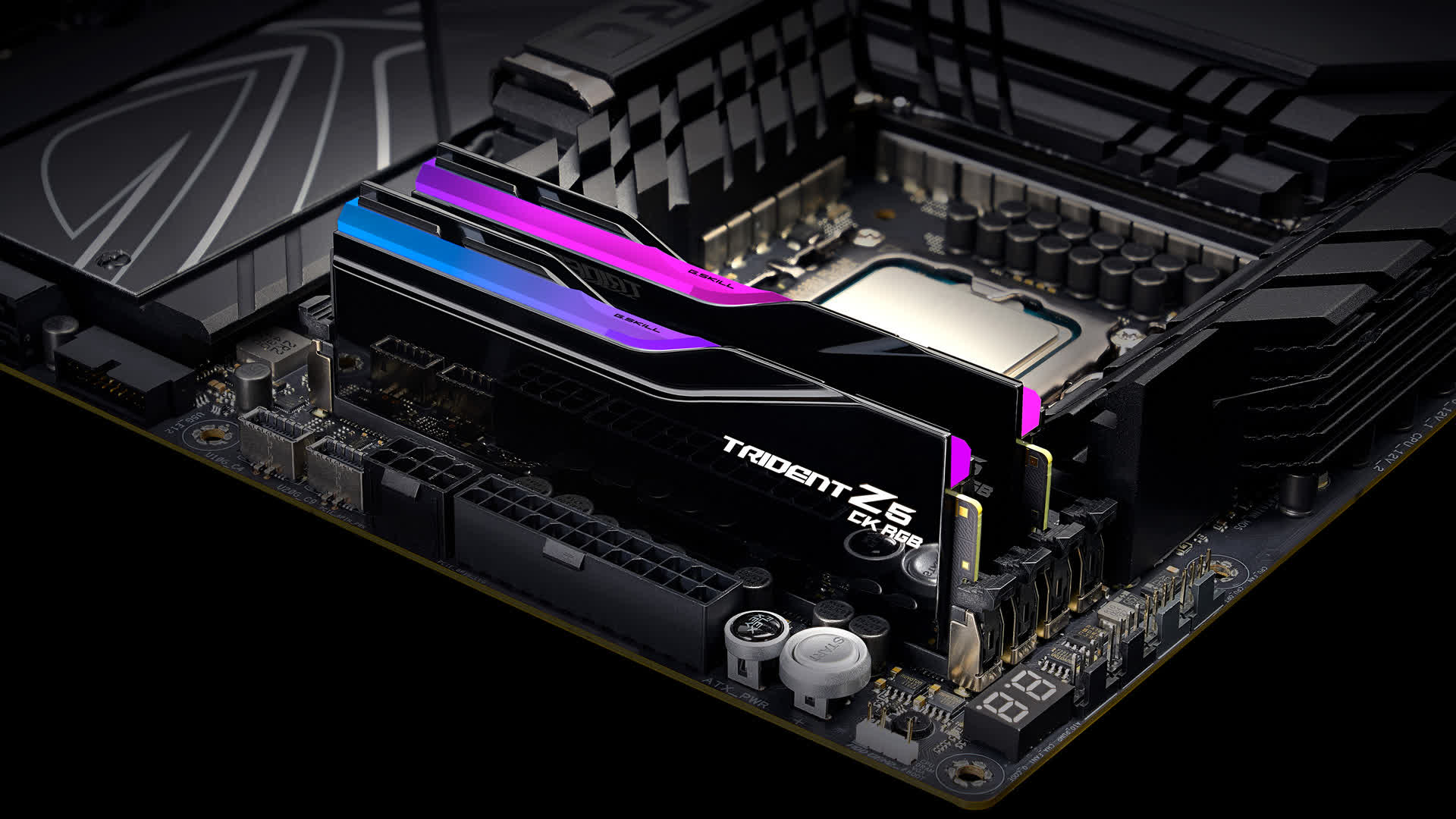What just happened? G.Skill just unleashed its Trident Z5 CK and Trident Z5 CK RGB DDR5 RAM designed specifically for Intel's freshly launched Core Ultra 200 processors and Z890 chipset motherboards. The headliner is that these sleek memory sticks are rated for a blistering DDR5-9600 straight out of the box.

To achieve such speeds, G.Skill has employed cutting-edge CUDIMM technology that integrates a clockdriver chip onto the RAM modules themselves. This helps stabilize the signal between the memory ICs and the CPU for more reliable operation at extreme transfer rates.
The company says that no adjustments in the BIOS are required to enable the overclocking profiles – all you have to do is drop the sticks into a compatible Z890 motherboard.

For those looking to push things even further, G.Skill will offer a premium 48GB CU-DIMM kit (2x24GB) clocked at DDR5-9000 with CL42-56-56-144 timings. The company claims to have hit DDR5-10000 speeds in their labs with these modules, using air cooling and flagship Z890 boards from Asus and ASRock.
Beyond offering such blistering speeds, the new Trident Z5 CK line maintains that signature G.Skill look with a sleek black brushed aluminum heatspreader and matching black top bar. Alternatively, you can opt for the RGB versions, which swap that bar out for a translucent lightstrip.

There are a couple caveats, though. First, you'll need cutting-edge Z890 hardware to unleash the full DDR5-9600 potential, as Intel's Core Ultra 200 CPUs alone only support up to DDR5-6400 speeds with CUDIMM or DDR5-5600 with standard DIMMs when running stock settings.
Second, these CUDIMM kits are currently Intel-exclusive since there's no support for AMD EXPO (Extended Profiles for Overclocking) yet, meaning you'll not be able to pair them up with the latest Ryzen 9000 CPUs.
However, if you're going for an ultra-enthusiast platform built on Team Blue's latest, these new sticks could allow you to pair that up with the fastest RAM clock speeds in the industry. The Trident Z5 CK and Trident Z5 CK RGB series DDR5-9600 memory kits are currently listed on Newegg.com.
G.Skill's new DDR5-9600 CUDIMM sticks can achieve DDR5-10000 speeds on air cooling